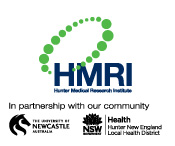
Current Research at Hunter Transplant Research Foundation
1. Novel Transplant Immunosuppressive Agent
The Moreton Bat Chestnut contains a factor called Castanospermine Australe. We established that this factor prolongs organ transplant survival and therefore is a transplant immunosuppressive agent. These studies hold the hope of providing another drug in clinical transplantation which may reduce toxicity (or side effects) from the transplant immunosuppressants that almost all recipients require long term.
Our team has found that Castanospermine works in a synergistic way with Cyclosporin A or Tacrolimus: this means that the two combined have greater effect than the sum of the two drugs. Transplant recipients are commonly taking one or the other of these drugs. Hence, Castanospermine or its derivative may bring this hope to fruition in clinical transplantation.
We have found that Castanospermine works by impairing the binding of rejecting cells to the transplant after blocking the expression adhesion molecules on these cell types and within the transplant. It also dampens down part of the rejection response. Further work in this field is proceeding.
Publications
Hibberd AD, Clark DA, Trevillian PR, Mcelduff P, Cowden WB. Castanospermine, an oligosaccharide processing inhibitor reduces lymphocyte – endothelial cell binding and the membrane expression of adhesion molecules. Transplant Immunol 2012; 27: 39-47.
Hibberd AD, Clark DA, Trevillian PR, Mcelduff P Interaction between Castanospermine an oligosaccharide processing inhibitor and Cyclosporin A in rat cardiac transplantation. World J Transplant 2016; 6(1): 206-214. Available from: URL: http://www.wjgnet.com/2220-3230/
full/v6/i1/000.htm DOI: http://dx.doi.org/10.5500/wjt.v6.i1.206 ISSN 220-3230
Contributors
Adrian Hibberd, David Clark, Cong Ma, Debbie Pepperall
2. Restored kidney transplantation after cancer excision from a donated kidney
Although renal transplantation provides better outcomes than dialysis for those fit for the transplant surgery there is an ongoing shortage of renal donors. This shortage occurs in Australia and most other countries. Our team assessed the possibility of using kidneys with a cancer after that cancer had been completely excised on the back table. This work required ethical explanations and clearances from prospective recipients and regulatory bodies. The clinical situation is that these kidneys are excised from patients that have a kidney cancer and agree to have that kidney excised for their own benefit. We collaborated with the Kidney Transplant Unit at Royal Brisbane Hospital. Comparisons with recipients matched for age, gender, time on dialysis and other factors were done using the ANZDATA Registry which is a contemporary population- based registry of all renal transplants done in Australia. We found that this procedure conferred a real improvement in patient survival and quality of life compared with dialysis. We also found that this procedure can be done safely using larger cancers than previously published. The risk of cancer recurrence in the transplant recipient was minimal. In this context, it is important to realize that all transplant recipients carry a small cancer risk that unfortunately may be hidden but present in the transplanted kidney.
Publication
Sprott P, Hibberd AD (dual first authors), Heer MK, Trevillian PR, Clark DA, Johnson DW, Oldmeadow C, Chiu S, Attia JR Assessment of Restored Kidney Transplantation Including the Use of Wider Criteria for Accepting Renal Donors After Cancer Excision Transplantation Direct 2019; 5: pe498; doi: 10.1097/TXD.0000000000000946. Published online in November 2019
3. Cancer in transplantation
Renal transplantation although conferring survival and quality of life improvements carries a risk of cancer that has been ascribed to the use of immunosuppressive agents. Some patients with renal disease require these agents to treat their underlying renal disease before any transplantation even if that is not necessary. Using the ANZDATA Registry we found that even these agents used before renal transplantation independently carry increased risks for some but not all cancers. What is in the clinical implication of this work: it means that in some clinical situations caution should be exercised when using immunosuppressive agents? This finding is a world first.
Publication
Hibberd AD, Trevillian PR, Wlodarczyk JH, Kemp, D, Heer MK, Stein AM Gillies AH, Sheil AGR. The Effect of Immunosuppression for Primary Renal Disease upon the Risk of Cancer in Subsequent Renal Transplantation: a Population Based Retrospective Cohort Study. Transplantation 2013; 95: 122-127. √
4. Translational research in transplantation
Translational research is about doing and applying research to improve clinical results for patients. The Newcastle Transplant Unit is a leader in bringing to fruition transplant translational research. We have campaigned strongly within the College of Medicine, Health and Wellbeing within the University of Newcastle for this concept and have now appointed a first-class medical scientist within the NTU and HMRI to further develop this concept and its application.
Publication
Hibberd AD Translational research by surgeons: how far and how wide? ANZJ Surg 2015; 85: 601-602. Doi: 10.1111/ans.13208 √
Adrian Hibberd 2 September 2022
References
5. Thompson JF, McCosker CJ, Hibberd AD, Chapman JF, MacDonald GJ, O’Connell DL, Mohacsi PJ, Spratt PM, Mahoney J. Identification of the cadaveric potential organ donors in New South Wales. Anaesthesia and Intensive Care. 1995; 23: 75-80.
6. Trevillian PR, Paul H, Millar E, Hibberd AD, Agrez MV αv β6 integrin expression in diseased and transplanted kidneys. Kidney international 2004; 66:1423-33.
7. Grochowicz PM, Hibberd AD, Bowen KM, Clark DA, Cowden WB, Willenborg DO. Castanospermine an oligosaccharide processing inhibitor reduces membrane expression of adhesion molecules and prolongs heart allograft survival in rats. Transplant Immunology 1996; 4: 275-285.
14. Vilayur E, Trevillian P, Nanra R, Gillies A, Heer M, Hibberd AD. A systematic study of linear C4D deposition in glomerular capillary loops in renal transplant biopsies. The Transplantation Society August 2008 Transplantation 2008 (abstract).
15. Hibberd AD, Trevillian PR, Roger S D, Wlodarczyk JH, Stein AM, Bohringer EG, Milson Hawke SM Assessment of the bioequivalence of a generic derivative of cyclosporin A by a randomized controlled trial in stable renal transplant recipients. Transplantation 2006; 81 (5); 711- 7.



Follow Us